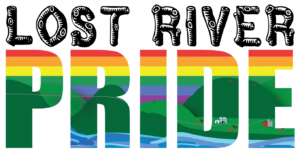 The Eastern West Virginia Community Foundation (EWVCF) and its affiliates work with donors who have established more than four dozen scholarship funds. Awards range from $500 to $6,000. In 2023, the Foundation awarded nearly $180,000 in scholarships to students in Jefferson, Berkeley, Morgan, Hampshire, and Hardy Counties.
The Eastern West Virginia Community Foundation (EWVCF) and its affiliates work with donors who have established more than four dozen scholarship funds. Awards range from $500 to $6,000. In 2023, the Foundation awarded nearly $180,000 in scholarships to students in Jefferson, Berkeley, Morgan, Hampshire, and Hardy Counties.
Our scholarship application is available through an online platform, AwardSpring. The application for our 2024 scholarship program is now open. You may begin your application at https://ewvcf.awardspring.com/
The application deadline is 5 PM, February 28, 2024.
Because we are not requiring FAFSA this year you must provide the following information in the appropriate fields in the application.
1. What is the estimated cost of attendance for one year (tuition, room/board, books/fees) for the school you are most likely to attend (most schools provide this information on their website)
2. Please describe your financial resources for college (scholarships, loans, 529 Savings plan, parent contribution, etc.).
3. Please tell us about your financial circumstances and your personal and family strategy for paying for college. Because we’re not requiring the FAFSA, this is your only opportunity to explain your need for a scholarship.
Questions can be directed to Karin Hammann Dunn: khdunn@ewvcf.org or 304-671-8167.
To see a list of scholarships available through the Community Foundation, click on the following links:
Hardy Funds – residents of Hardy County
Timeline:
- Wednesday, February 28 – Applications are Due. No Exceptions. The system will not accept new applications after 5:00 P.M.
- March/April – Our committees will review applications and conduct interviews for certain scholarships.
- May – We will notify applicants only if they’ve been selected to receive a scholarship.
- June 15 – Recipients must submit a completed scholarship acceptance form before we can process their scholarship for payment.
- July – Scholarship awards are mailed to schools (made payable to the school to benefit the recipient).
For step-by-step guidance on completing the online application, download: EWVCF AwardSpring Navigation Guide
For answers to common questions about our scholarship program, download Scholarships-FAQ-2023
For information about non-traditional scholarships, click here: Scholarships with Separate Applications

